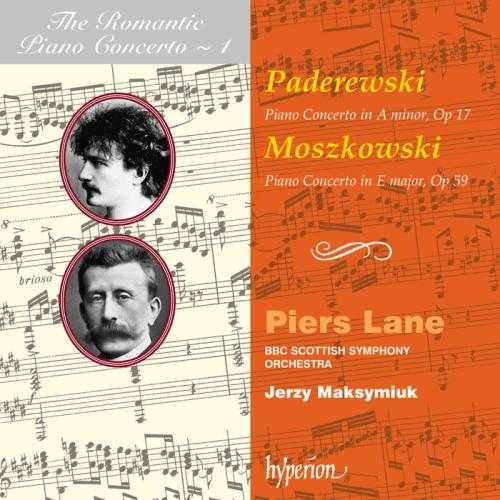
Performer: Marc-André Hamelin
Composer: Charles-Valentin Alkan
Audio CD
SPARS Code: DDD
Number of Discs: 1
Format: APE (image+cue)
Label: Hyperion
Size: 193 MB
Recovery: +3%
Scan: yes
01. Allegro Assai
02. Adagio
03. Allegretto Alla Barbaresca
04. Vivante
05. Esprits Follets: Prestissimo
06. Canon: Assez Vivement
07. Tempo Giusto
08. Horace Et Lydie: Vivacissimo
09. Barcarolle: Assez Lentement
Hamelin Runs Alkan’s Gauntlet… and Wins
Charles-Valentin Alkan probably holds the most uneven status of any composer in music history: Schumann saw him as mediocre and Busoni believed him the greatest piano composer next to Beethoven and Liszt. Today, Alkan is gradually becoming more recognized as a musical genius and important pianist-composer. But his music continues to be ignored by the mainstream and seems only known to connoisseurs. It’s a shame, when his compositions show such unquestionable originality and sound like the best elements of Chopin and Liszt. However, with the help of Marc-Andre Hamelin, I think we may be experiencing an Alkan Renaissance. Hamelin has probably contributed more to Alkan’s posthumous legacy than even Ronald Smith. Thanks to Hamelin, the Alkan discography has been fattened immeasurably. But beyond that, Hamelin is one of the only few who can bring out the best of Alkan’s unique music.
For those unfamiliar with Alkan’s Concerto for Solo Piano, Ronald Smith notes that “it has been described as the nineteenth century’s answer to Bach’s Italian Concerto. In both works a single player is invited to imitate the impression of solo and massed forces. But the Alkan is on a colossal scale; an isolated masterpiece which cannot be sensibly compared with any other work…” Hamelin has arguably catapulted this work into the spotlight, though I must confess that I absolutely loathed his first recording of it (Charles-Valentin Alkan: Concerto For Solo Piano). I was disappointed with Hamelin’s lack of legato touch in nearly every measure, the unyielding overly fast tempo, and, to my ears, an absence of emotional involvement.
With this latest recording on Hyperion, however, Hamelin has cleaned all of the stains, sealed the cracks, and revamped his entire delivery. The only thing Hamelin didn’t alter is his preferred tempo: really fast. After comparative listenings between both recordings, I was pleasantly stunned to find Hamelin’s new interpretation showing far greater vision and musicianship than he ever achieved. The first gigantic movement, for instance, is more energized and lush, more dynamically contrasting and passionate. Hamelin’s fast tempo now seems like a valid interpretative approach rather than a fault. Personally, I think Jack Gibbons’s “Adagio” is on a higher plane, but Hamelin improves himself here, too; he lets Alkan’s music brood and storm and never glazes over important moments. The third “Allegretto alla barbaresca” movement is a hair-raising and explosive thrillride. Hamelin’s treatment of the torrential maelstrom of notes is less mechanical and more expressive. He succeeds in conveying Alkan’s piquant and grandiose ideas, in addition to the sheer power of it all. Simply put, Hamelin’s new performance of this “Frankenstein’s monster” is in every facet superior to his original recording.
Alkan’s “Troisiéme recueil de chants Op. 65” makes an extremely odd companion for the mammoth Concerto. The music is less ambitious and magnificent, but no less communicative. To my knowledge, the first four pieces of this set have never been recorded before. Smith calls the second, “Esprits follets” or “Goblins” “a kind of supersonic Mendelssohn scherzo.” Those familiar with Alkan’s music may recognize melodic similarities between this piece and the first movement of the Sonatine. The “Tempo giusto” recalls Schumann’s sound world except for the frenetic ending, a blatant stamp of Alkan’s style. “Horace et Lydie” is a rather intricate conception. It is apparently music set to an ancient text of dialogues in which each speaker must answer each other with an identically sized line or stanza. According to Smith, “Alkan follows the scheme meticulously. He switches registers between the stanzas and sets the first pair in the Dorian and the second in the Phrygian modes.” Alkan’s last number of the set, the “Barcarolle,” is his famous miniature, and although Hamelin has recorded this before, I’m always impressed with his well-paced and haunting performance.
Bottom line: In my opinion, Jack Gibbons’s recording of the Concerto for Solo Piano is still the benchmark. I would actually encourage those interested in Alkan, who have not yet heard the Concerto, to start there (Alkan: 12 Études, Op. 39). But I cannot deny the value of Hamelin’s new recording and decidedly better performance of the Concerto. A parting message from Humphrey Searle: “Certainly no student of the extraordinary development of the piano and piano playing that took place in the last century should fail to know Alkan’s work–know it intimately, and observe the important place he fills.”




Thanks for this one too.
Thank you for your great work. I mean share this masterpiece.
Thanks for this trove of Hamelin. The man is an amazing pianist.
thank you very much